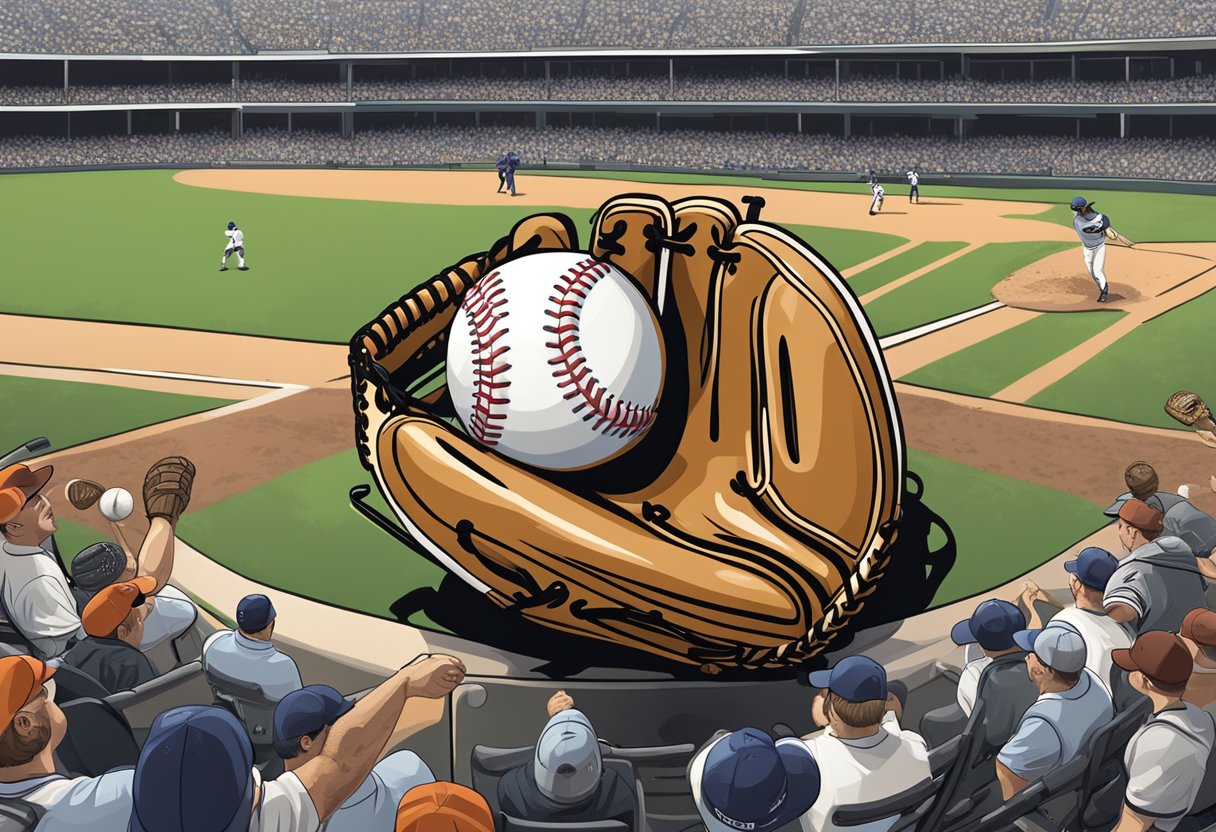Types Of Baseball Pitches
Baseball is a game of strategy, skill, and precision. One of the most important aspects of the game is pitching, which involves throwing the ball in different ways to deceive the batter and prevent them from getting a hit. There are many different types of baseball pitches, each with its own unique characteristics and uses.

Pitchers must master the fundamentals of pitching before they can effectively throw different types of pitches. The key to a good pitch is to throw the ball with speed and accuracy while also adding movement to make it more difficult for the batter to hit. Pitchers must also be able to throw pitches with different grips, arm angles, and release points to keep the batter guessing.
There are several types of baseball pitches that pitchers commonly use, including fastball pitches, breaking balls, off-speed pitches, and specialty and rare pitches. Each type of pitch has its own advantages and disadvantages, and pitchers must choose the right pitch for the situation at hand. By mastering different types of pitches, pitchers can keep batters off balance and increase their chances of success on the mound.
Key Takeaways
- Pitchers must master the fundamentals of pitching before they can effectively throw different types of pitches.
- There are several types of baseball pitches that pitchers commonly use, including fastball pitches, breaking balls, off-speed pitches, and specialty and rare pitches.
- By mastering different types of pitches, pitchers can keep batters off balance and increase their chances of success on the mound.
Fundamentals of Pitching
When it comes to baseball, pitching is one of the most important aspects of the game. A good pitcher can make all the difference between winning and losing. In this section, we will discuss the fundamentals of pitching, including pitching mechanics, types of pitches, and pitch selection and strategy.
Pitching Mechanics
Pitching mechanics are the foundation of a good pitch. A pitcher’s windup and follow-through are critical to delivering a pitch with accuracy and velocity. A windup is the motion a pitcher goes through before delivering the ball, while the follow-through is the motion a pitcher goes through after delivering the ball. A good windup and follow-through can help a pitcher generate more velocity and accuracy.
Types of Pitches
There are many types of pitches in baseball, each with its own unique characteristics. Some of the most common types of pitches include the fastball, curveball, slider, and changeup. Each pitch has its own grip and release point, which can affect its velocity and movement. A pitcher must master the grip and release point of each pitch to be effective on the mound.
Pitch Selection and Strategy
Pitch selection and strategy are critical to a pitcher’s success. A pitcher must choose the right pitch for the situation and be able to execute it effectively. This requires a deep understanding of the game and the opposing team’s hitters. A pitcher must also be able to mix up his pitches to keep the opposing hitters off balance.
In conclusion, pitching is a critical aspect of baseball that requires skill, strategy, and practice. A pitcher must have a solid understanding of pitching mechanics, types of pitches, and pitch selection and strategy to be successful on the mound. With dedication and hard work, any pitcher can improve his skills and become a dominant force in the sport.
Fastball Pitches
Fastballs are the most common pitch type in baseball. They are thrown at high velocity and are difficult to hit. There are several types of fastball pitches that pitchers can use to keep batters guessing.
Four-Seam Fastball
The four-seam fastball is the most basic type of fastball. It is thrown with a grip that allows the pitcher to put maximum velocity on the ball. The four-seam fastball is usually thrown straight and is difficult to hit because of its high velocity. It is commonly used by pitchers in the majors.
Two-Seam Fastball
The two-seam fastball is similar to the four-seam fastball, but it has more movement. It is thrown with a grip that allows the pitcher to put more spin on the ball, resulting in a pitch that moves slightly to the left or right. The two-seam fastball is often used by pitchers to induce ground balls.
Cutter
The cutter is a type of fastball that moves slightly to the left or right. It is thrown with a grip that allows the pitcher to put more spin on the ball than the two-seam fastball. The cutter is a difficult pitch to hit because it looks like a fastball but moves at the last moment.
Sinker
The sinker is a type of fastball that has a lot of movement. It is thrown with a grip that allows the pitcher to put more downward spin on the ball. The sinker is often used by pitchers to induce ground balls.
Overall, fastballs are a crucial part of a pitcher’s arsenal. They are thrown at high velocity and are difficult to hit. Pitchers can use different types of fastball pitches to keep batters guessing and to induce ground balls.
Breaking Balls
Breaking balls are pitches that don’t travel straight towards the batter, but instead have lateral and/or downward movement. These pitches can be very effective in deceiving the batter and causing them to swing and miss or hit a weak ground ball or pop-up. There are several types of breaking balls, including the curveball, slider, slurve, and knuckle curve.
Curveball
The curveball is one of the most well-known breaking balls. It is thrown with a grip that puts a lot of spin on the ball, causing it to break downward as it approaches the plate. The curveball is usually thrown at a slower speed than a fastball, making it more difficult for the batter to time their swing. The curveball is often used as a strikeout pitch, as batters have a hard time making contact with the ball due to its movement.
Slider
The slider is another popular breaking ball. It is thrown with a grip that puts less spin on the ball than a curveball, causing it to break laterally as it approaches the plate. The slider is often thrown at a similar speed to a fastball, making it difficult for the batter to distinguish between the two pitches. The slider can be an effective pitch for inducing ground balls or weak pop-ups.
Slurve
The slurve is a combination of a curveball and a slider. It is thrown with a grip that puts both downward and lateral spin on the ball, causing it to break in two directions as it approaches the plate. The slurve is often thrown at a slower speed than a slider, but faster than a curveball. The slurve can be a difficult pitch for batters to hit due to its unpredictable movement.
Knuckle Curve
The knuckle curve is a variation of the curveball. It is thrown with a grip that puts less pressure on the index finger, causing the ball to spin in a way that resembles a knuckleball. The knuckle curve has a sharper break than a regular curveball, making it a difficult pitch for batters to hit. The knuckle curve is often thrown at a slower speed than a regular curveball, but faster than a knuckleball.
Overall, breaking balls can be very effective pitches for deceiving batters and inducing weak contact. However, they can also be difficult pitches to master, as they require a lot of spin and precise control. Pitchers who can effectively throw breaking balls can be very valuable assets to their teams.
Off-Speed Pitches
Off-speed pitches are a crucial part of a pitcher’s arsenal. These pitches are thrown with less velocity than a fastball, but with a different movement and speed, which can deceive the hitter. In this section, we will discuss some of the most common off-speed pitches in baseball.
Changeup
The changeup is one of the most common off-speed pitches in baseball. It is thrown with the same arm action and release point as a fastball, but with a slower speed. The goal of a changeup is to deceive the hitter by making them think that a fastball is coming. The changeup is typically 8-10 mph slower than a fastball.
Circle Changeup
The circle changeup is a variation of the changeup. It is thrown with a grip that forms a circle with the index finger and thumb. The circle changeup is typically slower than a regular changeup, but has more movement. It is an effective pitch against both left-handed and right-handed hitters.
Splitter
The splitter is a type of off-speed pitch that is thrown with a split-finger grip. The pitch is thrown with the same arm action as a fastball, but with a slower speed and a downward movement. The splitter is a difficult pitch to hit because of its late movement. It is typically thrown by pitchers with larger hands, as the grip requires the pitcher to spread their fingers apart.
Forkball
The forkball is similar to the splitter, but is thrown with a different grip. The forkball is held with the index and middle fingers spread apart, with the ball resting on the fingertips. The pitch is thrown with the same arm action as a fastball, but with a slower speed and a downward movement. The forkball is a difficult pitch to throw, as it requires a lot of finger strength and can put stress on the arm.
Off-speed pitches are an important part of a pitcher’s arsenal. They can deceive the hitter and keep them off balance. Pitchers who can throw off-speed pitches effectively can be very successful in the game of baseball.
Specialty and Rare Pitches
When it comes to pitch types, there are a few that are considered to be specialty or rare pitches. These pitches are not commonly used by pitchers, but they can be effective in certain situations.
Screwball
The screwball is a pitch that breaks in the opposite direction of a curveball. It is thrown with the same grip as a curveball, but the pitcher pronates their wrist at release, causing the ball to spin in the opposite direction. This pitch is difficult to master and can put a lot of strain on a pitcher’s arm, which is why it is not commonly used.
Knuckleball
The knuckleball is a pitch that is thrown with little to no spin. This causes the ball to move erratically through the air, making it difficult for batters to hit. The pitcher holds the ball with their fingertips, rather than their knuckles, and releases it with a flick of the wrist. This pitch is difficult to control, but when thrown correctly, it can be devastating to hitters.
Eephus
The Eephus pitch is a high-arcing pitch that is thrown at a very slow speed. It is meant to catch batters off guard, as they are expecting a faster pitch. The Eephus pitch is not commonly used, but it can be effective in certain situations.
Gyroball
The gyroball is a pitch that was popularized in Japan. It is thrown with a spiral spin, causing the ball to move in a straight line with late movement. The gyroball is difficult to master and is not commonly used in Major League Baseball.
Overall, these specialty and rare pitches can be effective in certain situations, but they are not commonly used by pitchers. It takes a lot of practice and skill to master these pitches, which is why they are considered to be specialty pitches.






